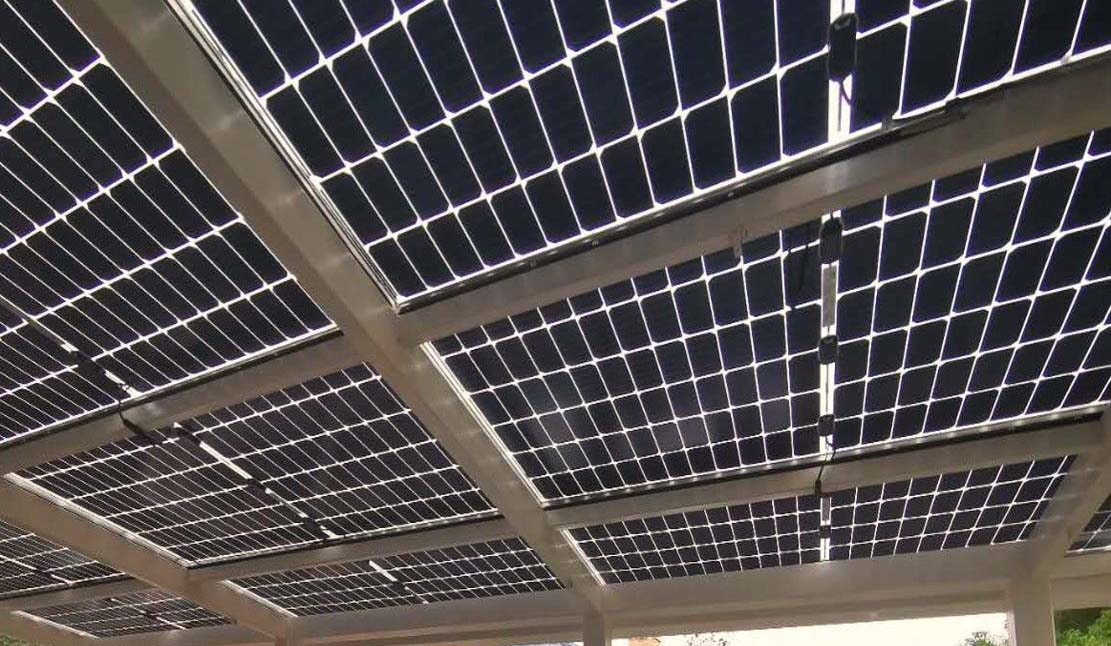From pv magazine USA
Glass is a very challenging material to study. Under minor deformation, its macroscopic properties are reversible, while its microscopic configurations are irreversible. In simple terms – repetitive heat cycling or mechanical deformation of glass – weakens the material in ways that cannot be measured without inducing failure. As a result, large-format solar panels – greater than our prior commercial standard – have questions of longevity that need to be answered.
Results of the inhomogeneous snow load test have been released for the Longi Hi-MP solar panel. The test simulates a beamless racking installation, in which the glass back of the module floats under its own strength and does not gain support from the racking structure.

The larger format solar panels – 2.6 square meters (28 square feet) – were able to reach or exceed 6,400 pascals (Pa) of force before failing. The press release notes five units were tested, and one of the units reached 7,400 Pa.
One limit to a standard mechanical stress test is that it doesn’t specifically focus pressure in the “lower” half of the solar panel, whereas in real-world settings, that load shifts toward the edge with the deepest snow accumulation. Thus, the creation of the inhomogeneous snow load test, which places increasingly larger weights on the panel, in this case, is installed at at 37 degrees.

As module size increases, the local pressure and bending moment begins to increase exponentially. Longi also tested a 3.1 square-meter module – the size of a large-format 210 mm solar cell based module – which failed at 4,600 Pa.
Longi recently announced that it had reached a sizing standardardization agreement with JA Solar and Jinko Solar for 182 mm solar cell panels. The standardization agreement, among other items, sets the size of 72-cell products at 2,278 mm × 1,134 mm (2.58 square meters), with 78-cell panels set at 2,465 mm × 1,134 mm (2.79 square meters).
The press release from Longi is part of an ongoing discussion among manufacturers as they settle in on the next generation of solar cell and panel sizing.

Longi included a table sharing the amount of glass deformation that would occur before the module actually breaks. Panel deformation matters because it can crack solar cells, and cracked solar cells lower module performance.
This content is protected by copyright and may not be reused. If you want to cooperate with us and would like to reuse some of our content, please contact: editors@pv-magazine.com.



3 comments
By submitting this form you agree to pv magazine using your data for the purposes of publishing your comment.
Your personal data will only be disclosed or otherwise transmitted to third parties for the purposes of spam filtering or if this is necessary for technical maintenance of the website. Any other transfer to third parties will not take place unless this is justified on the basis of applicable data protection regulations or if pv magazine is legally obliged to do so.
You may revoke this consent at any time with effect for the future, in which case your personal data will be deleted immediately. Otherwise, your data will be deleted if pv magazine has processed your request or the purpose of data storage is fulfilled.
Further information on data privacy can be found in our Data Protection Policy.